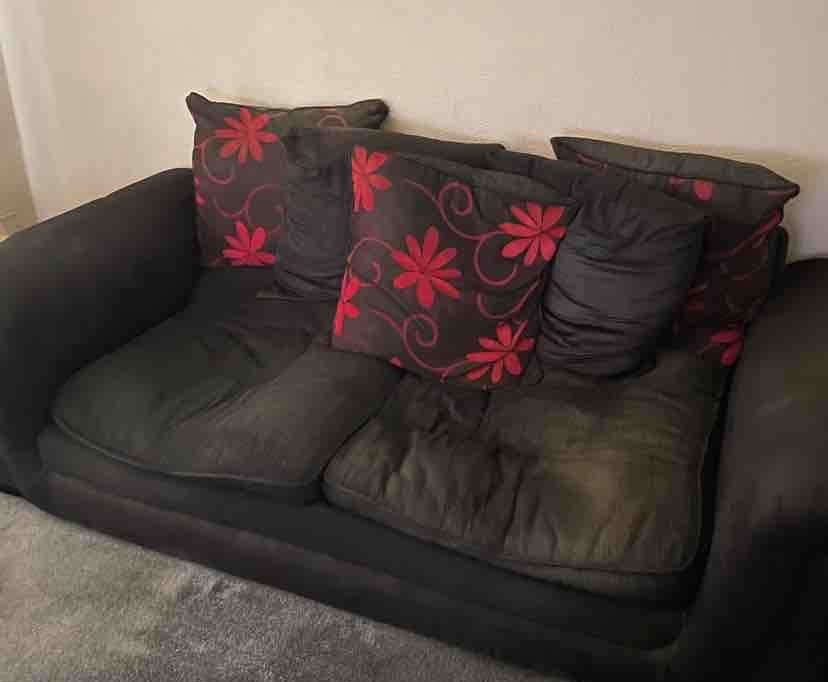A Comprehensive Guide to Upholstered Furniture Disposal in 2023
Posted on 21st March 2023 at 16:49
New regulations governing the disposal of upholstered residential furniture went into effect in January 2023 because of a change in legislation.
The new law mandates that upholstered residential furniture be burnt rather than dumped in a landfill in accordance with recommendations from the Environment Agency.
In this article, we'll examine the implications of the new regulations for getting rid of your upholstered furniture and offer suggestions for how to dispose of furniture successfully in 2023.
Why have the rules changed?
According to the Environment Agency, used upholstered residential furniture frequently includes persistent organic pollutants (POPs). The law was altered to ensure that these chemicals are safely disposed of because if they are not handled properly, they might have a negative impact on the environment.
What are Persistent Organic Pollutants (POPs)?
Upholstered furniture was frequently treated with POPs during production to give the fabric flame-retardant qualities. The likelihood of these chemicals being present in upholstered furniture made before this date is high, despite the fact that this procedure has not been utilised since 2019.
The issue with POPs is that the compounds can last for a very long time unaltered. POP-treated upholstery that is disposed of in a landfill runs the risk of contaminating nearby groundwater, wildlife, and other ecosystems.
All discarded upholstered furniture must now be incinerated rather than dumped in landfills to prevent POPs from upholstered furniture from polluting the environment.
What Furniture is Included?
All upholstered furniture with fabric coverings and cushions is covered by this new legislation.
This includes:
Sofas
Sofa beds
Footstools
Armchairs
Floor cushions
Chairs
Bean bags
Office chairs
Futons
Sofa cushions
Furniture that is covered by leather, synthetic leather and foam is also included.
What Impact Do These Changes Have on Us?
A wide range of sectors will be affected by the change in the law. Below is an explanation of how the regulations will impact various industries:
Charity Shops:
Donations to charity stores shouldn't be impacted by the legislative changes. Upholstered furniture can still be given to charities as long as it is in a condition that allows for a sale.
If charity shops receive donations that are not suitable for resale, issues could result. Some people could elect to give used upholstered furniture to a good cause rather than handle it themselves.
Because of this behaviour, organisations would have to pay to properly dispose of upholstered furniture. Also, they would be left with dead stock taking up valuable storage space in the interim.
Hospitality
When it comes to getting rid of upholstered furniture moving forward, the hospitality industry is probably going to waste some time and money.
Broken furniture cannot be disposed of with regular trash; additional arrangements must be made to prevent contamination of other garbage by the broken furniture.
Paying for additional services will be necessary.
Members of the public.
Waste upholstered seats will most likely cost customers a little bit more to dispose of.
It will be required to determine whether the proper facilities are in place to dispose of upholstered furniture rather than just taking items to the dump. It is frequently necessary to pay an extra fee.
Waste Disposal Facilities
To make sure they are complying with the new legislation, waste disposal facilities will have to take on additional duties.
Retraining employees and implementing new procedures will be required. To ensure that upholstered furniture is properly burned in accordance with governmental regulations, additional protocol must be followed.
Could fly tipping rise in frequency?
Regrettably, it seems plausible that because of these new regulations, fly-tipping may actually rise.
Fly tippers frequently search for cost-free methods of getting rid of furniture and equipment. To prevent fly-tipping from becoming a widespread occurrence, we must all exercise caution and report any incidents.



How to Properly Dispose of Waste Upholstered Furniture
1. Donate It
As long as the furniture is in a state that allows for resale, donating upholstered furniture to thrift stores or second-hand warehouses is acceptable.
Donating furniture is a fantastic alternative because POPs only become an issue when it is disposed of in a landfill. Items now have a second chance to be appreciated in a new home thanks to this sustainable decision.
When donating your furniture, make sure to check with your nearby charity shop. The furniture must be in good shape to be resold; otherwise, a charity shop will have to use donated monies to dispose of it, diverting money away from their charitable endeavours.
2. Use Certified Recycling Facilities
Due to the new upholstered furniture restrictions, several recycling facilities had to change. If there is a designated skip for these things, waste upholstered furniture can be dumped at the landfill.
Check ahead to find out if your local recycling centre is providing this service.
3. Hire a Specialised Skip/RoRo
For large-scale jobs, you can hire a specialised skip or RoRo. This is useful for house clearances or commercial property renovations.
If the furniture can’t be donated, a skip will make it a lot easier to clear many upholstered items. When hiring the skip, specify that you need one for waste upholstered furniture. You will not be able to mix other waste in the same skip.
Let Rubbish Clearance Hertfordshire Recycling Help You: Give us a call on 01438 215018.
Share this post:



